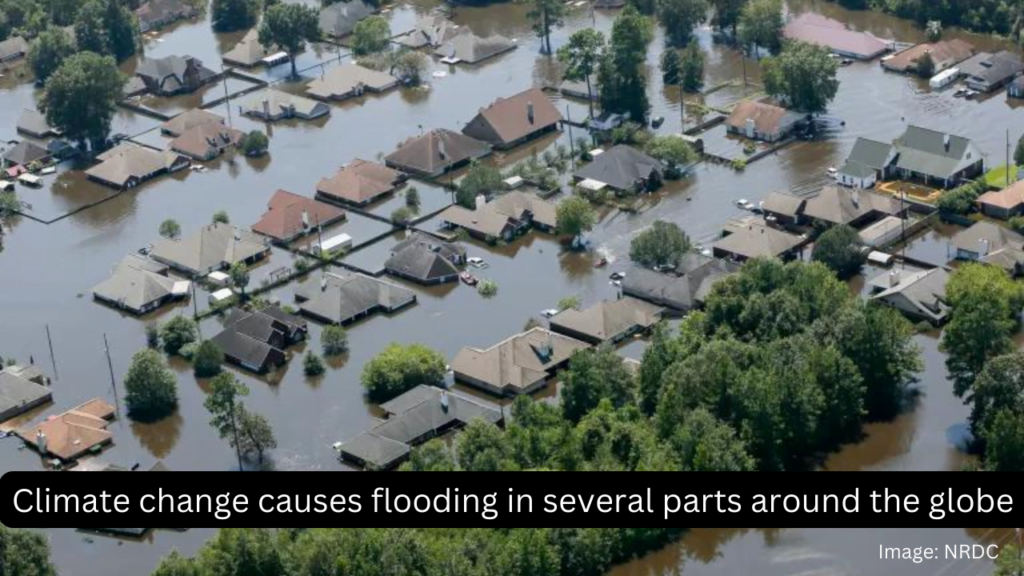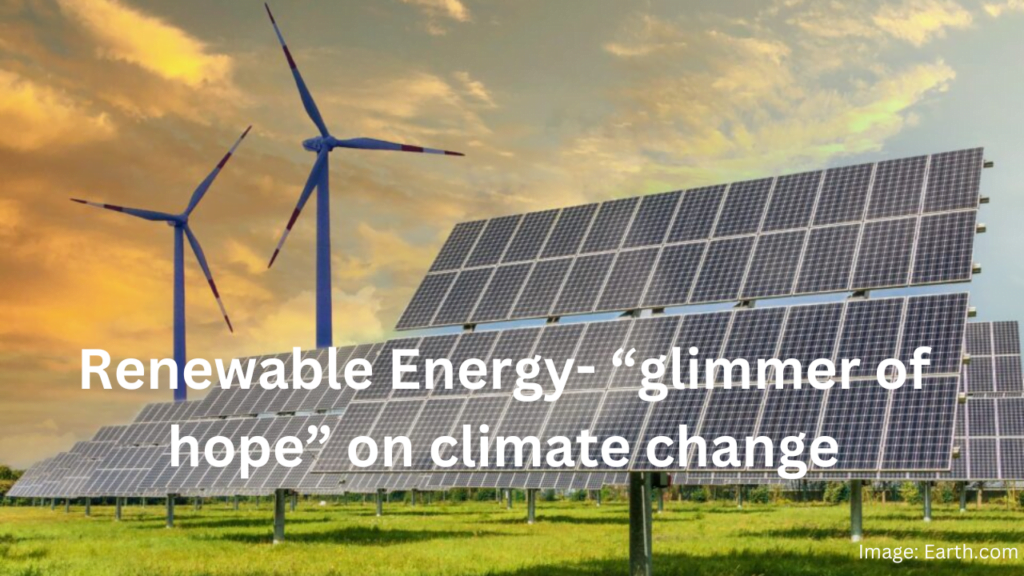The United Nations meteorological office stated on Tuesday that due to series of climate change records from 2023, the globe is now in danger of exceeding a critical warming barrier that gave new meaning to the phrase “off the charts.”

The World Meteorological Organization detailed how extreme weather events in 2023 caused economic losses of billions of dollars and caused devastation for millions of people worldwide in its annual “State of the Global Climate” report.
Indicators including as greenhouse gas levels, sea level rise, ocean heat and acidification, Antarctic Sea ice cover, and glacier retreat, according to the WMO, were breaking records and in some cases smashing them.
It confirmed 2023 as the hottest year on record, and said the decade from 2014 to 2023 was also the hottest on record.
According to studies, the global average temperature in 2023 would be 1.45 degrees Celsius higher than pre-industrial levels, which is just below than the important warming threshold of 1.5 degrees Celsius.
As specified in the landmark Paris Agreement, the 1.5 degrees Celsius threshold is widely acknowledged as an indicator of when climate effects become more damaging to people and the world.
The climate issue, which is mostly driven by the use of fossil fuels, is causing extreme temperatures to rise.
“Never have we been so close — albeit on a temporary basis at the moment — to the 1.5°C lower limit of the Paris Agreement on climate change,” said by WMO Secretary-General Celeste Saulo. “The WMO community is sounding the Red Alert to the world,” she added in a statement.
Temperatures are just one aspect of climate change. We should be extremely concerned by what happened in 2023, especially in light of the abnormally warm ocean, retreating glaciers, and melting Antarctic sea ice.

“Whistles are blowing” due to climate change:
The study was released soon after the Copernicus Climate Change Service of the European Union said that global temperatures have exceeded 1.5 degrees Celsius for the first time in a full year.
Nonetheless, the conclusions of the EU climate monitor, which were released last month, did not violate the terms of the 2015 Paris Agreement. Long-term goals of the climate agreement include “limiting global warming to well below 2, preferably to 1.5 degrees Celsius, compared to pre-industrial levels.”
However, in order to prevent the worst of the climate catastrophe, experts have emphasized again and time again how vital it is to cut greenhouse gas emissions.
UN Secretary-General António Guterres said on Tuesday that “Earth is issuing a distress call.” The Earth is in danger, according to the most recent State of the Global Climate report. He went on to say that pollution from fossil fuels is contributing to an unprecedented degree of climate catastrophe.
All of the main indicators have sirens blasting. Not only do certain records top the charts, but they also smash the charts. Moreover, change is accelerating.
After burning fossil fuels for more than a century and using uneven and unsustainable amounts of energy and land, the globe has already warmed by around 1.1 degrees Celsius.
The climate crisis is alarming due to the surge in ocean temperature. The rising ocean surface temperatures in the North Atlantic have reached a record-breaking temperature level in 2023.
READ MORE: Unprecedented Climate Challenges: Rising North Atlantic Ocean Temperatures Beyond 5.4°F

A “top of hope” on climate change:
According to the WMO assessment, about one-third of the world’s oceans experienced a marine heat wave on an average day in 2023, which negatively impacted food chains and important ecosystems.
That said, one “top of hope” was the production of renewable energy.
According to the WMO, the production of renewable energy has risen to the top of the climate action agenda in 2023 since it may aid in achieving decarbonization objectives.
According to analysts, the addition of renewable capacity climbed by about 50% in 2023, reaching 510 gigawatts overall. This, according to the agency, was the highest rate seen in the previous 20 years.







Pingback: Trees Struggle to Capture Excessive Carbon Dioxide in Warming Climates